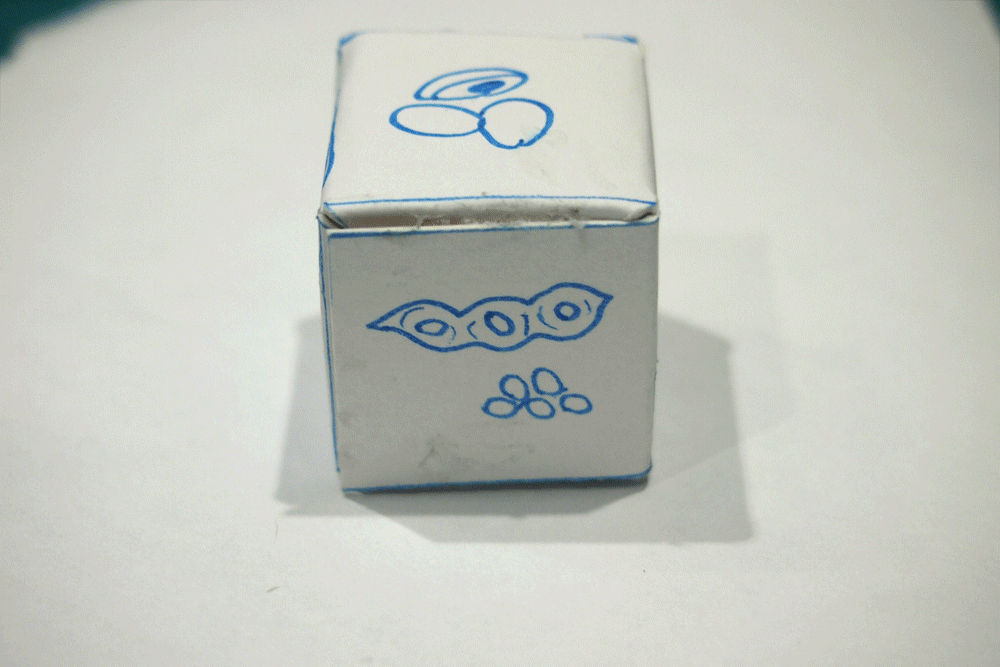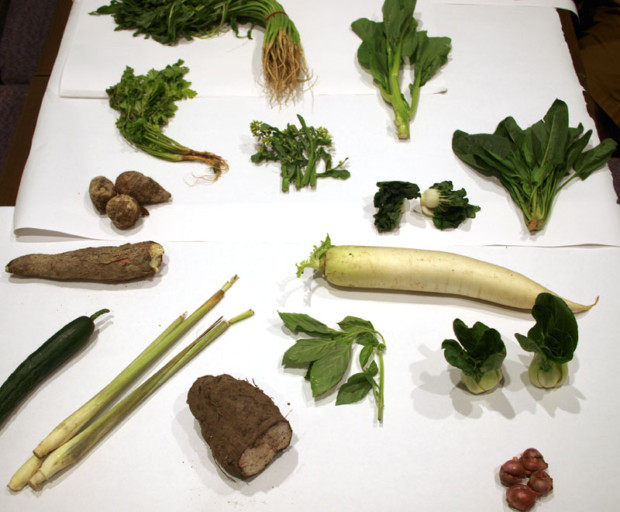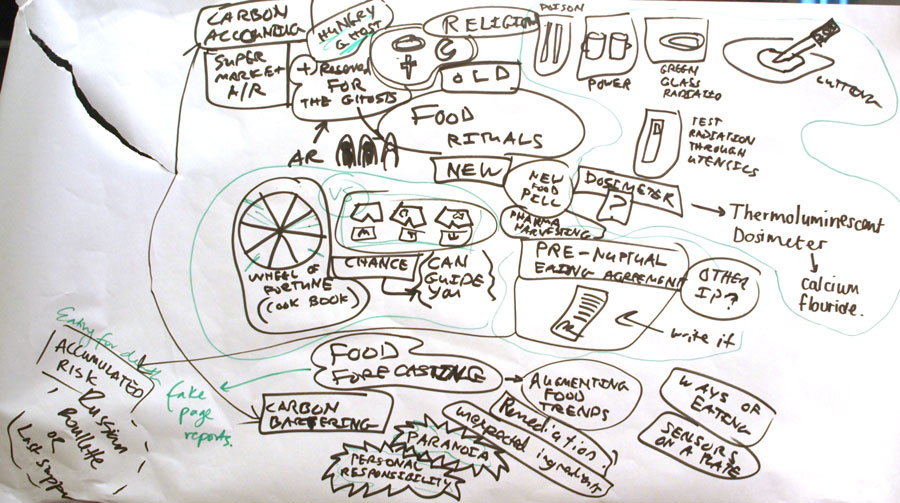THE END IS NIGH
What would you eat if there was an emergency? If catastrophe strikes, what plants are YOU growing, and what do you have stockpiled in your pantry? What would you like your last meal to be?
The Center for Genomic Gastronomy has very much enjoyed it’s stay in Singapore, but all good things must eventually come to an end. We’d like to finish with a BANG.
Join us on Friday 28th September, 2012 for the RECIPES FOR DISASTER picnic in the botanical gardens near Symphony Lake. Bring along a dish and taste test your way through other responses to the apocalypse. We hope to document the recipes and the stories behind all the dishes that you bring.
Some apocalyptic themes that might inspire your dish: Peal Oil, Water Wars, End of Days, the Singularity. What does climate change taste like?
*******
Today the Center hosted day 1 of a 2 day workshop on “Designing in the Anthropocene: Food, Health & Climate” that will conclude with a symposium later this week. The National University of Singapore have been great hosts, with faculty, students and complete strangers dropping by on the first day of workshops. (We even had a faculty member from Nanyang Technological University).
The morning session was spent brainstorming possible interesting topics, in relation to food, climate change and food security. Singapore’s status as a net importer of almost everything (food, fuel, products) shaped our brainstorming process. Singapore’s government and many inhabitants are aware of Singapore’s reliance on many flows outside of their borders in order to survive. One participant described Singapore as having a “permeable membrane”: many things flow through Singapore, but the government is very careful and choosy about what they want to stay within the border. Another metaphor we developed was “Spaceship Earth: Cruiseship Singapore”.
Our brainstorming lead us to three main tracks:
* New Food Rituals
* Food for the End of the World
* Dining with Big Data
NEW FOOD RITUALS
The first track was inspired by every eater’s desire to assess and consume healthful food. We began thinking about ways that eaters could test the fish that they catch for Mercury content, or even radiation count. Two interesting historical precedents for food testing were food rituals employed to prevent poisoning:
* Korean nobility used silver chopsticks so that if there were poison in their food the chopsticks would corrode. A good example of food & sensing technology from way back.
* There is also the idea that nobility in Europe would “Cheers” and clink mugs of beer/mead so that if either was poisoned, both eaters would suffer the consequences.
Both of these examples we relayed by word of mouth, and no one in the workshop knew for certain if they were real or merely legend, or how exactly they worked. However, these examples helped us start to imagine what kind of new food rituals might be useful for eaters today. Most of us are not worried about being poisoned by political enemies, but rather by the pervasive and ambient toxins and pollutants that humans have released into the biosphere. In day two we hope to prototype a couple of food rituals.
FOOD FOR THE END OF THE WORLD
The second track began as a series of ideas about recipes relating to the end of something: vanishing flavors and genomes, eating during peak oil, cuisine & climate change. However, one of the groups started looking into failed food utopias and possible future food utopias. Historical examples have suggested that globally humans should turn to eating insects, algae, breadfruit or nutritional yeast. However, these top-down modernist ideas often ignore flavour, culture and preference, so the group decided to investigate of ways to cook with the utopian ingredients. By creating recipes that represent these failed utopias on the plate, the group hope to initiate a material exploration of failure and dreams for the future.
DINING WITH BIG DATA
The third strand are interested in how big data effects the way we eat. Making the ‘right choice’ when consuming food is very difficult when every week new research reveals raised chances of cancer or new health benefits of a specific food. The amount of information available is overwhelming, and to what end? Death is always the inevitable conclusion to life. So this group decided to create a tool for preparing you for death. What would it be like to eat an avocado and be told all the negative effects of this activity in the process? What would it be if you were told only positive effects? What would your dining experience be like if you invited Big Data for dinner? This is the starting point for this strand, and in day two they plan to prototype this experience.
Denisa and Jaz hard at work
The three groups that formed on the first day continued where they left off in the morning of day two, with the goal of creating a very basic prototype by the end of the day. A group of 12 NUS undergraduate students joined us for the second half of the day. Denisa took them through a brainstorming exercise to think about extreme scenarios for eating during the anthropocene, and then they split into groups of three to work on different projects: food forecasting, future imaging and hunting for unusual ingredients.
NEW FOOD RITUALS
There were no chemists on the team, so finding simple testing methods for mercury or pesticides proved difficult. However, the team uncovered a number of easy ways to create DIY ‘pH paper’, or even liquid. An overview of different methods was found here.
Deciding to try the Red Cabbage method, where alkaline changes the paper to green; acids to red, we brainstormed various applications for this pH detector. What pH do different foods have? What does it mean to eat an acidic diet or an alkaline diet? How would knowing the pH of your food affect your eating habits?
From dipping pieces of food into the pH cabbage water, to soaking wooden chopsticks in it to make them pH sensative, eventually we decided to try and create a pH sensitive tablecloth. Given time constraints and lack of ingredients, this was not completed in time on day two, but distilled water is currently being infused by red cabbage in order to have a prototype ready for tomorrow’s symposium.

Jaz and Cat looking for methods to make pH paper and red cabbage soaking.
CHANCE-BASED EATING HABITS
After going through a number of possible interface designs (wheel of chance, strong man fair-ground scale, pinwheel) we settled on prototyping a dice, because a working prototype could be made quickly, and it is easily transported and replicable.

Dice drawings by Jodi Newcombe
The dice could be used at an event such as the Massivley Multiplayer Carbon Reduction Dinner Competition which is like a playing card game where you eat as well. Each diner is a player, and rolls the dice at the start of the course (amuse bouche, salad, appetizer, main course, side dish, desert). Each dice roll determines which version of the course they will get. Different versions have different ingredients and different carbon loads. Every player gets one chance to re-roll during the game, and there only limited numbers of each kind of plate. The last one to roll gets stuck with whatever is left, and the order of the dice rolls changes each turn. The eater with the lowest carbon count at the end of the meal wins! (And everyone hopefully has a good time leaving the complicated ethics of carbon accounted food up to the roll of the dice).
The idea of chance continues to be an interesting and unexplored technique for changing behavior, and removing information overload around personal environmental choices.
DINING WITH BIG DATA
 Figuring out the Makey Makey and recording Big Data audio
Figuring out the Makey Makey and recording Big Data audio
This group got started the morning off by discussing ways for the prototype to manifest itself. Using a makey makey as a prototyping tool, they decided to create an interaction between a human eater and an avacado. When the eater cuts into the avacado, it triggers audio that either tells you good or bad big data health consequences related to eating avacados. The audio was developed as a script of the ‘good angel’ and the ‘devil’ as a classic symbol of the mind wrestling with morals, desires, and consquences, but in this case a battle of the good data vs the bad data. In addition, this interaction happened in front of a computer with a webcam so the eater sees herself reflected. As the avacado is sliced and diced an angel or a devil appears on the eater’s shoulder depending on what audio is triggered.
FOOD FORECASTING
This was an additional excerise with the group of undergraduate students. Taking inspiration from trend forecasting practices, this exercise was devised to imagine what a food forecasting practice might be like. The Center has long considered how certain ingredients go from being somewhat fringe to being ubiquitous in supermarkets and at restauraunts. For example, the rise of pomegranetes and black garlic in Western cuisine. Is it linked to scientific discoveries? Celebrety chef recipe books? We wonder: can food forecasting be used to create meaningful changes in the food system, or simply new fads?
The students were divided into teams and had to imagine what food trends might emerge in the future. Zack played the Boss of a food forecasting company and the teams were working for him. At the end of the exercise, the two teams presented their food forecasting ideas to a panel of judges that decided which trends to take forward.
 Presentation to the panel of judges
Presentation to the panel of judges
Day 2 allowed us to refine our initial ideas, and create some simple prototypes. At least a few of these ideas will be carried on in our research over the coming months, and it was a treat to engage with so many different thinkers and makers.











